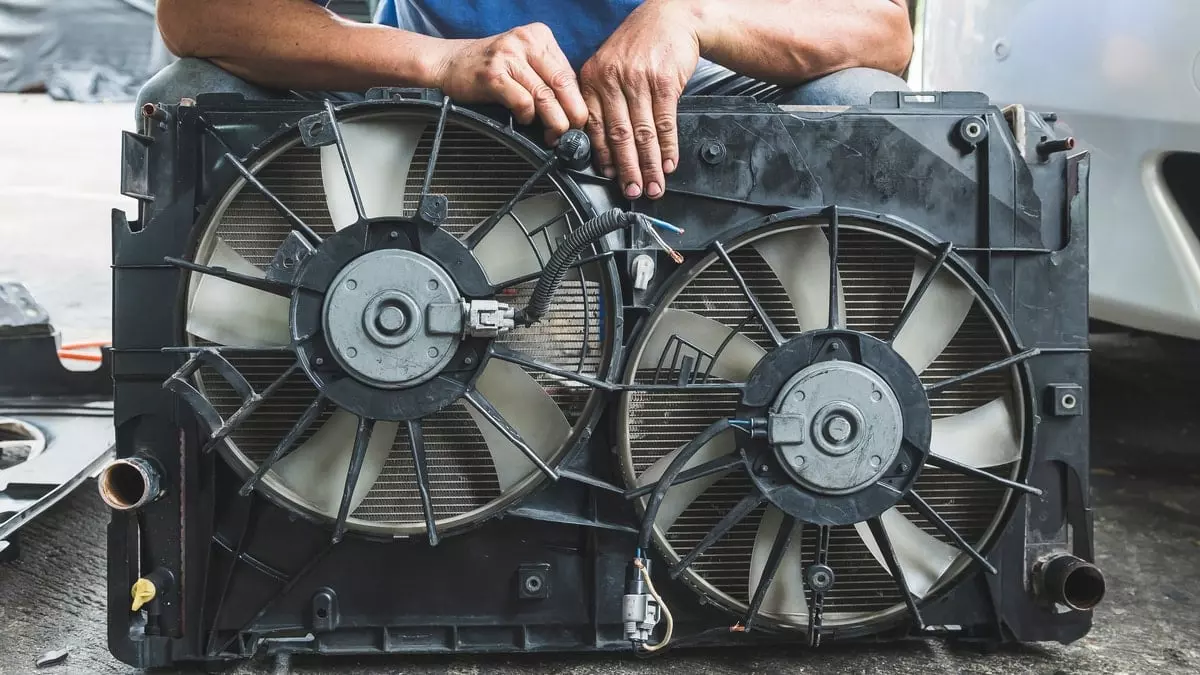Welcome to Mechanics News! Today, we're going to delve into the world of car fans - those essential components of a vehicle's cooling system. We'll explore how they work to prevent overheating and maintain engine performance, and we'll also take a look at the potential consequences if they malfunction. So, buckle up and get ready to learn some valuable information!
The Importance of a Car Fan in Your Vehicle's Cooling System
 Visual representation of a car fan
Visual representation of a car fan
A car fan is a crucial component of your vehicle's cooling system. It ensures that your engine maintains an optimal temperature by drawing air through the radiator, which helps dissipate heat from the engine coolant. This helps prevent overheating and keeps your engine running smoothly.
The car fan consists of several key parts, including the electric motor, blades, shroud, and clutch. The motor powers the blades, which draw air through the radiator. The shroud directs the airflow to the radiator and prevents it from escaping. The clutch enables the fan to spin freely or lock onto the motor shaft, depending on the engine's temperature.
Without a functioning car fan, your engine can overheat and suffer serious damage. Malfunctions can occur due to various reasons, such as a faulty motor, broken blades, or a damaged clutch. It's important to promptly diagnose and fix any issues to avoid costly repairs and potential engine damage.
Maintaining Your Car Fan to Prevent Malfunctions
Regular maintenance of your car fan is key to preventing malfunctions and extending its lifespan. Periodically checking the fan's condition and inspecting its components for signs of wear or damage is crucial. Additionally, cleaning the blades and shroud can remove any dirt or debris that hinders airflow. Checking the fan belt tension and replacing it if necessary ensures that the clutch engages and disengages correctly.
By staying on top of regular maintenance, you can save yourself from unnecessary repairs and keep your vehicle running smoothly. Consult your car manual for specific instructions on maintaining your car fan, and don't hesitate to seek professional help if you suspect any issues.
Exploring Alternative Cooling Systems
While the traditional car fan is reliable and efficient, there are alternative cooling systems available that offer different benefits. One example is the electric cooling fan, which uses an electric motor to drive the blades instead of a clutch. This system is more energy-efficient, requires less maintenance, and produces less noise than the traditional fan.
Another alternative is the liquid cooling system, which circulates coolant through the engine and radiator using a pump. Although more complex and expensive, this system offers better heat dissipation and is commonly found in high-performance vehicles.
Choosing the right cooling system depends on your vehicle's needs, budget, and personal preferences. Consulting with a mechanic or researching different options can help you make an informed decision about what works best for you.
Your Questions Answered
Let's address some common questions regarding car fans and their maintenance.
What is a car fan and how does it work?
A car fan is a device used to cool down a vehicle's engine. It draws air through the radiator, dissipating heat from the engine coolant. There are two main types of car fans: belt-driven and electric. Belt-driven fans are connected to the engine through a pulley system, while electric fans are directly mounted to the radiator and controlled by a temperature sensor.
What are the symptoms of a malfunctioning car fan?
Some common symptoms of a malfunctioning car fan include engine overheating, poor air conditioning performance, unusual noises coming from under the hood, and consistently high dashboard temperature readings. If you experience any of these symptoms, it's crucial to have your car inspected by a professional mechanic.
How can I troubleshoot and repair a malfunctioning car fan?
If you suspect that your car fan is malfunctioning, you can follow these steps to troubleshoot and repair the issue:
- Check the fuse responsible for the fan and replace it if necessary.
- Test the fan motor using a multimeter to ensure it is functioning properly.
- Inspect the wiring for damage or corrosion and repair or replace as needed.
- Test the fan relay to ensure it is supplying power to the fan motor.
- If all else fails, consider replacing the entire fan assembly.
If you're unsure about any of these steps, it's best to consult a professional mechanic for assistance.
Conclusion
A car fan is a vital component that plays a crucial role in keeping your vehicle's engine cool and running smoothly. By understanding how it works and being able to recognize signs of malfunction, you can save yourself from costly repairs and potentially dangerous situations on the road.
Remember to inspect the fan blades for any damage, check the fuses and relays, and monitor your engine's temperature gauge. With proper maintenance and care, your car fan will continue to keep your engine cool for years to come. Stay cool and drive safe!
If you found this article helpful, be sure to check out more like it at Automotive Mechanics.

















